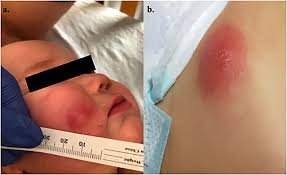Overview
X-Linked Agammaglobulinemia (XLA) is a rare primary immunodeficiency disorder that affects the body’s ability to produce antibodies. It is caused by a mutation in the gene responsible for B-cell development, leading to an almost complete lack of immunoglobulins. As a result, individuals with XLA are highly vulnerable to bacterial and viral infections, particularly in the respiratory and gastrointestinal systems. Lifelong treatment with immunoglobulin therapy significantly improves quality of life and reduces infections.
What is
X-Linked Agammaglobulinemia (XLA) is an inherited immune disorder caused by a mutation in the BTK (Bruton’s tyrosine kinase) gene, located on the X chromosome. This mutation disrupts the development of B lymphocytes (B cells), which are essential for producing antibodies (immunoglobulins). Without sufficient antibodies, the body cannot effectively fight infections. XLA primarily affects males and typically presents in infancy or early childhood.
Symptoms
- Recurrent bacterial infections, especially in the ears, sinuses, lungs, and skin
- Chronic or severe respiratory infections such as pneumonia or bronchitis
- Gastrointestinal infections leading to diarrhea or malabsorption
- Delayed or absent lymphoid tissue (tonsils and lymph nodes appear small or absent)
- Poor response to vaccines
- Fatigue, failure to thrive, or delayed growth in children
Causes
XLA is caused by mutations in the BTK gene, which is crucial for B-cell maturation. When this gene is defective, B cells fail to mature and circulate in the blood. Without B cells, the body cannot produce immunoglobulins (IgG, IgA, IgM), which are essential components of the immune system’s ability to fight infections.
Risk Factors
- Genetic inheritance: XLA follows an X-linked recessive pattern, meaning it almost exclusively affects males
- Family history: A known family history of XLA or unexplained immune deficiency in male relatives
- Carrier mothers: Females carrying the defective gene have a 50% chance of passing it to male offspring
- Lack of immunoglobulin production in early life
Complications
- Chronic respiratory infections can lead to lung damage such as bronchiectasis
- Severe gastrointestinal infections, including those caused by Giardia or enteroviruses
- Failure to thrive due to repeated illnesses
- Vaccine-associated complications, especially from live vaccines (e.g., oral polio vaccine)
- Autoimmune disorders in some cases
- Neurological issues, such as encephalitis from enterovirus infections
Prevention
While XLA cannot be prevented due to its genetic origin, early detection and proper medical management can significantly reduce the risk of severe complications:
- Genetic counseling for families with known history
- Prenatal or newborn screening in high-risk families
- Avoidance of live vaccines
- Early initiation of immunoglobulin replacement therapy
- Education of caregivers and patients to recognize early signs of infection
Treatment Options in Korea
Medical care in Korea for XLA focuses on infection prevention and immune system support. Key treatment options include:
- Immunoglobulin replacement therapy (IVIG or SCIG): Regular intravenous or subcutaneous immunoglobulin infusions to supply missing antibodies and reduce infections
- Prompt antibiotic treatment for infections
- Monitoring for chronic lung or gastrointestinal issues through regular follow-up
- Avoidance of live-virus vaccines, and tailored immunization plans
- Genetic testing and counseling for affected families
- Multidisciplinary care, involving immunologists, pediatricians, and infectious disease specialists for optimal long-term management
With consistent immunoglobulin therapy and infection control, individuals with XLA can lead relatively healthy and active lives.













